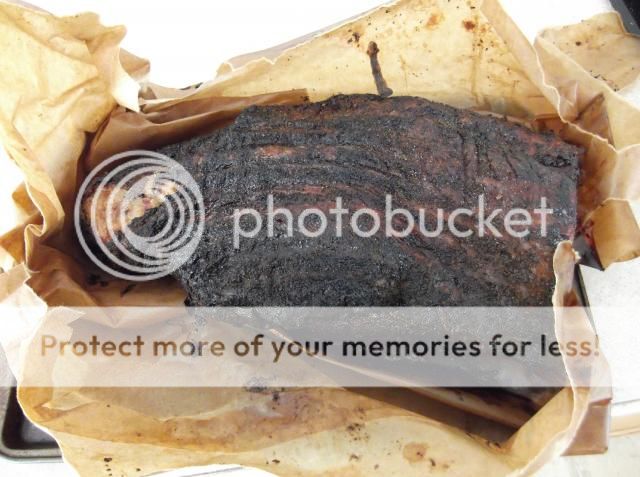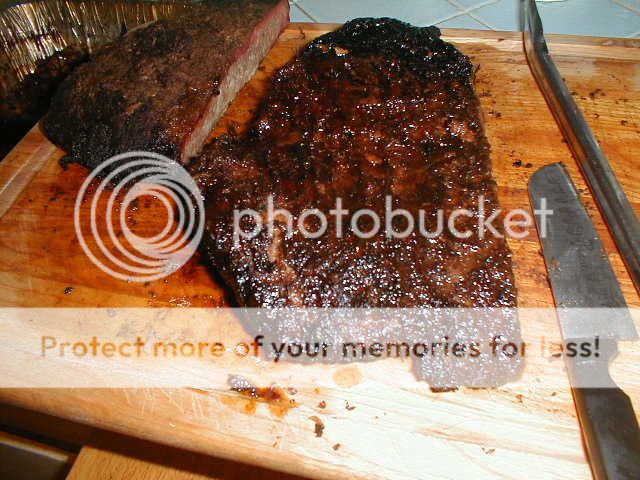I cook around 220-240 and wrap when the internal temp hits 165 ish.
If your cooker will do it, cook hotter (275 - 300 range). As pjtexas1 said try butcher paper, unlike foil it'll breathe rather than steam the bark. I use oil before I apply my rub, it helps the rub stick but I think that it also helps in bark production.:wink:
Here's my brisket cooking method which always yield's a good bark and is very similar to Bludawg's KISS method, give it a try next time.:grin:
CENTRAL TEXAS STYLE BRISKET
To make a true central Texas style brisket you'll need four key ingredients, beef, kosher salt, coarse black pepper and smoke! Here's my method.
Start with a whole packer brisket. A whole packer consist of two parts, the point (fattier portion) and the flat (the leaner portion). Be sure and ask your market manager or butcher for that cut.
Once you have found your brisket, trim the fat cap layer down to about 1/4 inch or less. The idea is to have a thin layer of fat that will render down, marry up with your spice rub and become a sticky, crunchy and flavorful part of the bark.
After the fat has been trimmed down, I like to apply some cooking oil which helps the rub to adhere to the meat and activates the natural oils in the spices.
The spice rub will consist of a 50/50 blend of kosher salt and 16 mesh coarse ground black pepper. I like to dust mine with a little garlic powder as well but the important things are the salt and pepper. Coat the meat well with the rub and allow the rub to mix in with the oil for 30 minutes to an hour.
Heat the pit to 275 (different cookers like to run at different temperatures and you may be cooking at higher or lower temps but the method remains the same, only cooking time is effected).Smoke the brisket for 4 hours, after the first 4 hours wrap the brisket in butcher paper and continue cooking at 275, checking the flat for tenderness after 3 more hours of cooking. To do this simply find a sharp pointed object such as a thermometer or skewer and poke the flat in several places, (always determine doneness by probing for tenderness, not IT) when it has the feel of room temperature butter it's time to pull the brisket off of the cooker.
Allow the brisket (still wrapped in butcher paper) to rest on the kitchen counter for a minimum of 2 hours, at the end of the rest period it's ready for slicing. Slice against the grain and enjoy.:grin:
Using this method I can usually get a 15 pound whole packer done in 7 to 8 hours (not counting resting time).:wink:
P.S. If you are using foil to wrap with, vent it after removing the brisket from your pit until the IT has fallen to the 150 to 160 degree range and then reseal it for the remainder of the resting period.







